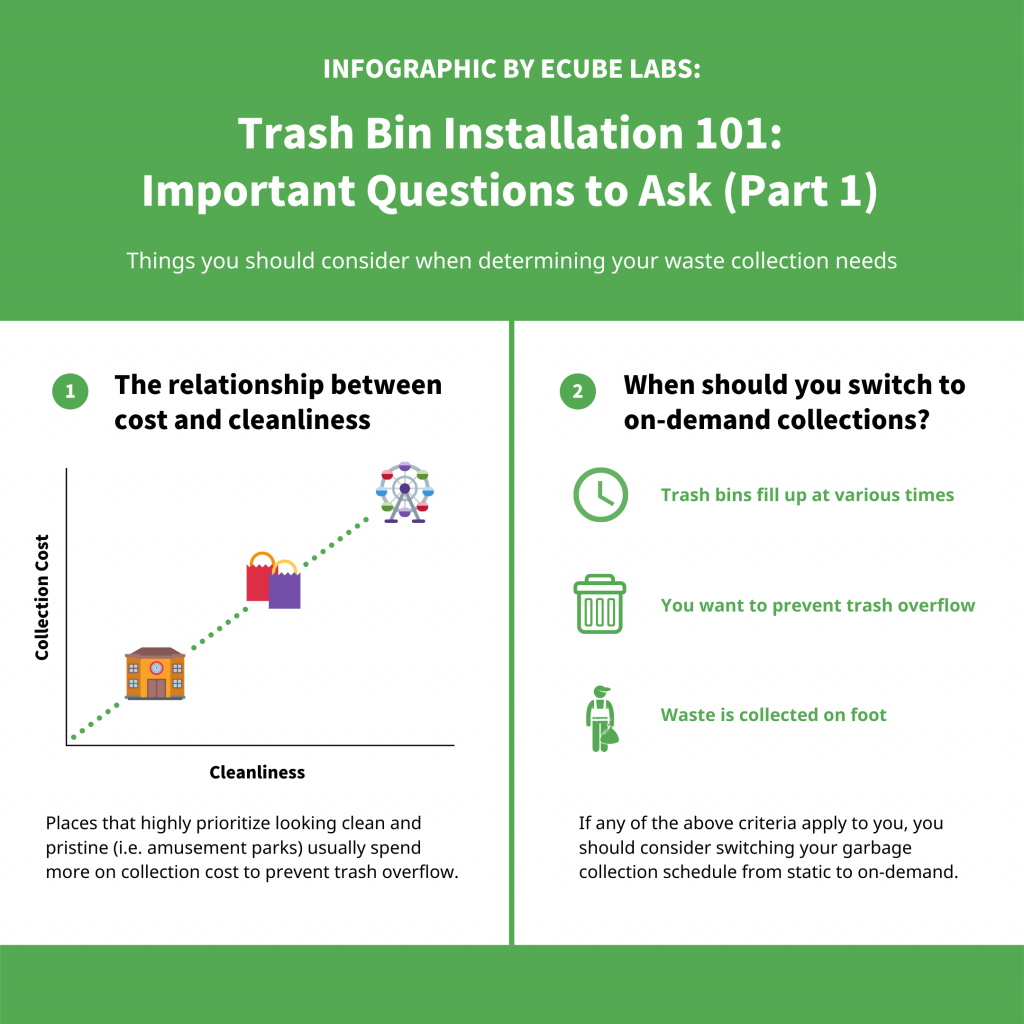“How many trash bins should be installed in this area?”
This is a question that often crosses the minds of those who oversee waste management for cities and locations like amusement parks, universities, shopping malls, and airports. Many municipalities and businesses have reached the conclusion that there is no answer, and many will make their decision reactively based on complaints. That is, they install more bins when there are numerous complaints from residents/customers about the lack of bins and conversely, remove the bins when they realize most bins are not filled up or people complain about trash bins attracting illegal dumping.
Although it is understandable why places still take the reactive approach, if one takes into consideration the increasing costs of labor and additional expenses for waste disposal services, one can see the importance of having a clear installation plan with the optimal number of bins. When we think about our initial question, it makes most sense to break it down to fully capture its complexity:
- What are the questions one should ask oneself before deciding on the number of trash bins to install?
- What are indicators used to determine that you have installed the number of appropriate trash bins?
- What are the factors to consider when placing the bins?
In this article, we will cover question 1 as part of a 3-part series where we will break down how to figure out the process of optimizing trash bin installation. In part 1, we will list questions one needs to ask before deciding on the number of bins.
1. How important is cleanliness in the area?
Reduction in waste collection cost and enhancing cleanliness are always a trade-off. In a place like amusement parks and shopping malls where cleanliness is extremely important, people collect trash more than 10 times a day. Trash overflow is simply unacceptable at these venues. On the other hand, there is some leeway for a little overflow when it comes to streetside bins on college campuses. In this scenario, how quickly the management can deal with an overflow when it happens is more important than preventing overflows entirely. In conclusion, one must first determine the standard of cleanliness in order to figure out the number of trash bins that need to be installed.
2. Will garbage collection be on-demand or on a fixed route?
An area that requires collections by vehicles and is more lax about cleanliness generally connects based on a fixed route rather than on-demand. The biggest upside of a fixed route collection is not having to worry about weighing different options and decisions since everything is predetermined. If your situation meets any of the following 3 criteria, you should consider switching to on-demand collection:
- The times that trash fills up vary greatly among bins (i.e. trash bins at different locations will fill up at different times of the day). In this case, it is crucial to increase the ratio of on-demand collections to improve efficiency.
- Cleanliness is your number one priority and you want to create a cleaner environment compared to before. It is very difficult to prevent overflow completely if you are not monitoring bins and adjusting your collection route and schedule accordingly.
- Collection is carried out by people walking around with carts rather than vehicles.In this case, on-demand collections are necessary because it takes a longer time to cover all the points of a route on foot than with a garbage truck.
We hope this article was able to help you reevaluate your waste collection needs by bringing up questions you should be asking yourself even before you think about the number of trash bins that need to be installed. Now that you have a better understanding of your priorities and can make a decision on trash bin installations, tune in to part 2 to learn about how to determine that you have installed the appropriate number of trash bins.

